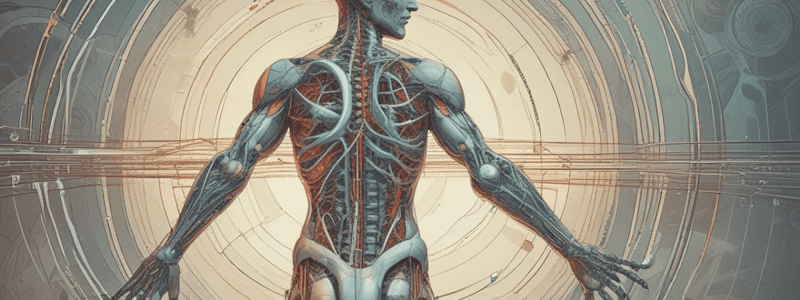Podcast
Questions and Answers
At what age does the eruption of deciduous teeth generally start?
At what age does the eruption of deciduous teeth generally start?
- Three months
- At birth
- One year
- Six months (correct)
Until what age does the eruption of deciduous teeth typically last?
Until what age does the eruption of deciduous teeth typically last?
- Three and a half years (correct)
- Three years
- Four years
- Two years
Which of the following teeth are included in the group categorized as posterior teeth?
Which of the following teeth are included in the group categorized as posterior teeth?
- Incisors and molars
- Canines and premolars
- Incisors and premolars
- Premolars and molars (correct)
Which grouping of teeth is incorrect based on the classifications provided?
Which grouping of teeth is incorrect based on the classifications provided?
Which teeth are NOT typically grouped as posterior teeth?
Which teeth are NOT typically grouped as posterior teeth?
In which direction is the apex of the orbit directed?
In which direction is the apex of the orbit directed?
What anatomical location does the optic canal, which represents the apex of the orbit, connect the orbit to?
What anatomical location does the optic canal, which represents the apex of the orbit, connect the orbit to?
Which nerve supplies the levator palpebrae superioris muscle?
Which nerve supplies the levator palpebrae superioris muscle?
Which nerve is responsible for supplying the lateral rectus muscle?
Which nerve is responsible for supplying the lateral rectus muscle?
The optic canal forms a part of which structure in the skull?
The optic canal forms a part of which structure in the skull?
What is the duration of the eruption of deciduous teeth?
What is the duration of the eruption of deciduous teeth?
Which teeth are included in the posterior teeth group?
Which teeth are included in the posterior teeth group?
What is the lower jaw called?
What is the lower jaw called?
In the universal system of notation for the primary dentition, what does the letter G refer to?
In the universal system of notation for the primary dentition, what does the letter G refer to?
What does Number 36 refer to in the FDI (Fédération Dentaire Internationale) notation system?
What does Number 36 refer to in the FDI (Fédération Dentaire Internationale) notation system?
How long does the eruption of deciduous teeth last?
How long does the eruption of deciduous teeth last?
Which statement correctly describes the eruption of deciduous teeth?
Which statement correctly describes the eruption of deciduous teeth?
Which option correctly indicates the structure of the posterior teeth?
Which option correctly indicates the structure of the posterior teeth?
Flashcards are hidden until you start studying
Study Notes
Orbit and Eye
- The apex of the orbit is directed upward.
- The optic canal represents the apex of the orbit, connecting the orbit to the middle cranial fossa.
- The levator palpebrae superioris muscle is supplied by the oculomotor nerve.
- The lateral rectus muscle is supplied by the abducent nerve.
Teeth and Dentition
- The eruption of deciduous teeth starts at six months and lasts until three and a half years.
- Teeth are grouped into posterior teeth, which include premolars and molars.
- The lower jaw is movable and is called the mandible.
- In the universal system of notation for primary dentition, the letter G does not correspond to any of the mentioned options.
- In the FDI system, number 36 refers to the mandibular right first molar.
- The correct statement about the eruption of deciduous teeth is that it starts at six months and lasts until three and a half years.
Studying That Suits You
Use AI to generate personalized quizzes and flashcards to suit your learning preferences.



